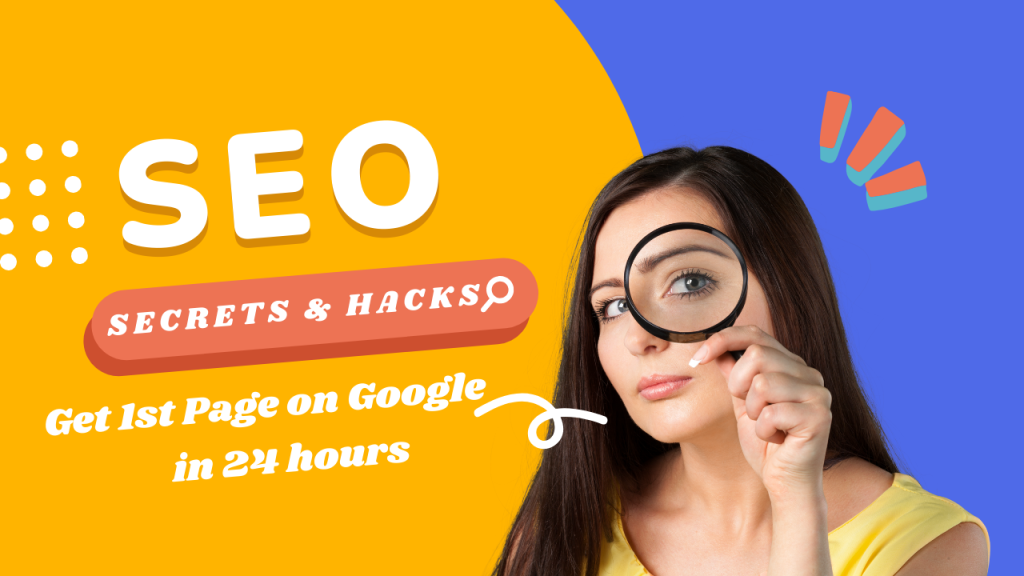The Secret Marketing Hack That Doubled My Revenue
As a digital marketer, I’ve always loved the thrill of crafting campaigns, tweaking strategies, and watching the metrics soar—or flop. My career has been a rollercoaster of A/B testing, brainstorming sessions, and chasing elusive trends. But every so often, I stumble upon a game-changing insight. This is the story of one such insight—a secret marketing hack that revolutionized my approach and doubled my revenue within six months.
It all began with a problem, as most good stories do. Despite my best efforts, I hit a plateau. Sales were stable, but growth was stagnant. I ran campaigns across platforms, experimented with content types, and optimized conversion funnels. Yet, the results were underwhelming. My instincts told me I was missing something crucial.
The Aha Moment
The breakthrough came during a conversation with a client who casually mentioned their obsession with “customer psychology.” While I had dabbled in understanding buyer personas and behavior, I had never deeply explored the psychological principles that drive decision-making. That conversation sparked a curiosity I couldn’t ignore.
I started devouring books, articles, and podcasts about consumer psychology. One principle kept surfacing: social proof. The more I read, the more I realized I had been underestimating its power. Social proof is the phenomenon where people copy the actions of others to make decisions, especially when they’re uncertain. In marketing terms, it’s leveraging reviews, testimonials, endorsements, or any sign that “people like me” are benefiting from a product or service.
I had always included testimonials in my campaigns, but they were buried at the bottom of pages or sprinkled in email sequences. I wasn’t maximizing their potential.
Implementing the Hack
The “secret hack” was simple but required a strategic overhaul: weaving social proof into every single stage of my marketing funnel. I treated social proof not as an afterthought but as the cornerstone of my strategy.
Here’s how I did it:
1. Revamping the Website
My website was functional but lacked emotional impact. I redesigned it to highlight customer stories and real-world success at every touchpoint. The homepage featured a rotating banner of customer testimonials, complete with photos and videos. Each product page included detailed reviews, with filters for visitors to see feedback from people with similar needs.
I also created a dedicated “Customer Stories” section. These weren’t just bland testimonials; they were narratives showing the transformation customers experienced. For example, one story featured a small business owner who used my strategies to boost her e-commerce sales by 300%.
2. Incorporating Proof in Ads
Instead of generic product descriptions, my ads began showcasing real results. For instance, rather than saying, “Learn how to grow your business,” my new campaigns said, “Meet Sarah, who grew her revenue by 150% using our framework.” Adding faces, names, and specific numbers made the ads relatable and trustworthy.
I also started using dynamic ads with customer feedback. Platforms like Facebook and Instagram made it easy to retarget users with ads featuring testimonials from people in their demographic.
3. Email Campaigns with Real Stories
Email marketing is one of my strongest channels, but it was missing the personal touch. I revamped my sequences to highlight success stories. Instead of a sales-heavy pitch, my emails now started with, “Here’s how [Customer Name] achieved [Specific Result] with our help.”
The results were immediate. Open rates increased, click-through rates soared, and, most importantly, conversions shot up.
4. Leveraging Video Content
Video is the king of content, so I tapped into its potential for social proof. I asked happy clients to share short video testimonials. These weren’t polished, high-production pieces; they were raw and authentic. People resonate with real voices, and these videos became a goldmine.
I posted them on social media, embedded them in landing pages, and even used them in ads. One video testimonial alone brought in over $10,000 in sales within its first month.
5. Creating a Community
One of the most effective ways to showcase social proof is through an active, engaged community. I created a private Facebook group where my customers could share their progress, ask questions, and celebrate wins. The group quickly became a hub of positive feedback and organic testimonials.
What’s more, it doubled as a source of content. Customers were happy to let me share their success stories publicly.
The Results
Within three months of implementing these changes, my revenue started climbing. By the six-month mark, it had doubled. But it wasn’t just about the numbers. My brand became more relatable, trustworthy, and engaging. Customers started referring their friends, unprompted. My retention rates improved because people felt more connected to the brand and its community.
The shift also made my marketing feel more authentic. I wasn’t just selling a product or service; I was highlighting real people and real transformations.
Lessons Learned
- Social Proof is Everywhere: Whether it’s a star rating, a customer review, or a success story, social proof is all around us. It’s easy to overlook its power, but when used strategically, it can be transformative.
- Authenticity Matters: People can spot a fake testimonial from a mile away. Genuine stories, real names, and actual results build trust.
- Consistency is Key: Social proof isn’t a one-and-done tactic. To see results, it needs to be integrated into every stage of the customer journey.
- Ask and You Shall Receive: Happy customers are often willing to share their experiences if you ask. Whether it’s a review, a video testimonial, or a case study, don’t hesitate to reach out.
- Data Drives Credibility: Whenever possible, include specific metrics. Saying, “Our customers see an average ROI of 200%” is far more impactful than a vague claim like, “Our customers love us.”
Moving Forward
This experience taught me that the best marketing hacks aren’t flashy or complex. They’re often rooted in fundamental human behavior. Social proof works because it taps into our innate desire to belong and make informed decisions based on others’ experiences.
As my business continues to grow, I keep looking for ways to build trust and deepen connections with my audience. The hack that doubled my revenue wasn’t just about leveraging social proof—it was about shifting my mindset. I stopped focusing solely on what I could offer and started amplifying what my customers had achieved.
That subtle change made all the difference. If you’re struggling to break through a plateau, I encourage you to do the same. Listen to your customers, highlight their successes, and make them the stars of your story. You might be surprised at just how powerful their voices can be.
Conclusion
Marketing is an ever-evolving field, but some principles remain timeless. Social proof is one of them. It’s not just a tactic; it’s a reflection of trust and authenticity. By embracing this secret hack, I not only doubled my revenue but also built a brand that people genuinely believe in.
So, what are you waiting for? Start weaving social proof into your marketing strategy today. Your next success story could be just around the corner.

















